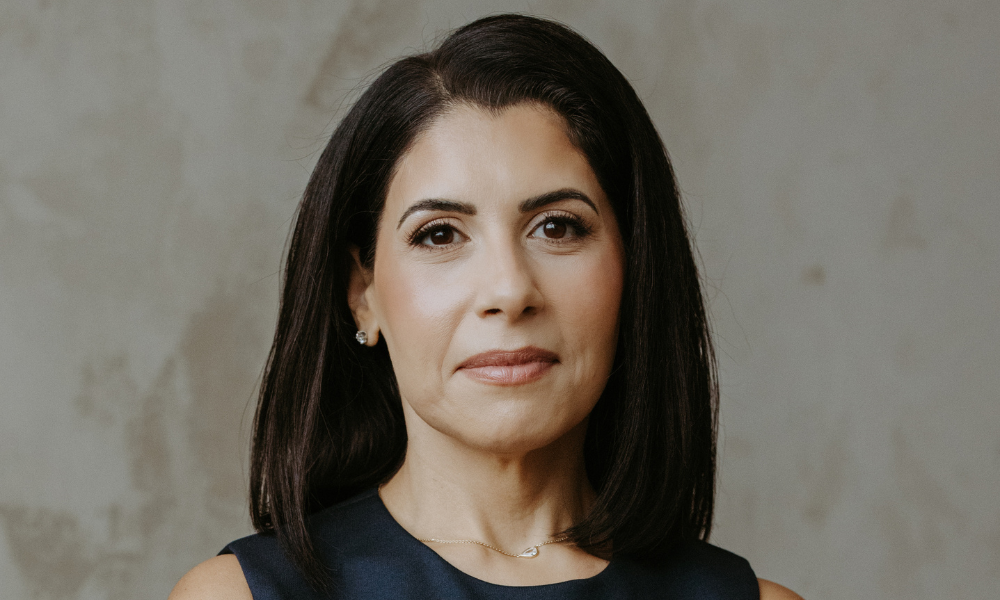Supply chain transparency, climate change, diversity, quality disclosure, and relationships with Indigenous groups continue to dominate the ESG conversation in the mining sector.
Leanne Krawchuk, Canada co-chair and global lead for the mining group at Dentons LLP, says proxy season – the time between April and June when most publicly traded companies host their annual general meeting – provides valuable insights for mining companies managing their ESG profile.
She says the discussions reveal prevailing shareholder expectations. “Gender diversity has been a key focus of shareholder activists, and I think that continues to be front and centre.”
This year, Krawchuk says shareholders consistently raised board-member term length and “over-boarding,” where board members serve on so many boards they cannot devote sufficient attention to the business and its ESG performance. The 2023 proxy season also saw more commentary on using compensation to drive ESG-metric performance by tying executive pay to specific key performance indicators concerning diversity, climate change, human rights, and supply chains. Krawchuk, who practises in Edmonton, adds that racial diversity was “quite a focus” this year.
“We’re going to continue to see that,” she says. “So, very important for nominating committees this next year and years to come to be focusing very much on: How are you doing your recruitment and your matrix for the board? And how are you identifying appropriate candidates with racial diversity?”
In June, the Mining Association of Canada published a new protocol – part of the Towards Sustainable Mining (TSM) sustainability program – on improving equity, diversity, and inclusion performance. Pierre Gratton, president and CEO of the association and TSM’s founding member, said in a press release the “male-dominated” and “homogeneously white” mining sector must transform if it is to continue to grow and meet current challenges, which include decarbonization and new technology development.
“It’s not just about female representation. It is about all representation,” says Sharon Singh, partner and co-head of the Aboriginal law practice at Bennett Jones LLP. “Why that is important to the mining industry is because we make better decisions.” Singh practises in Vancouver and advises clients in mining and other industries on regulatory law, climate change, environmental issues, governance, and Aboriginal law.
In mining, there is a sharper focus on diversity in the employee base in addition to companies’ top echelons, and securities commissions are debating enhancing mandatory disclosure around gender diversity to include other areas, says Ramandeep Grewal, a Toronto-based partner in the corporate group at Stikeman Elliott LLP. For many of Grewal’s clients, this converges with another critical aspect of a mining company’s ESG profile: relationship-building with Indigenous groups. Forging positive ties has historically been a “significant component” of mining enterprises’ success, and she says it is essential for companies to have Indigenous representation, providing a diverse perspective for business decisions.
“This is kind of like two aspects of the ESG framework coming together – not saying that that’s necessarily new, but it’s definitely more of a focus. Increased representation is one way companies are advancing their relationships and their understanding, and thus addressing their impact on Indigenous communities,” says Grewal.
In mining, the relationships with Indigenous communities have evolved from stakeholders to rights holders, where the First Nations are dealt with as governments, says Singh. She says this mentality shift has produced partnerships through equity ownership, service provision, and the “upfront work” of ensuring the nation is on board with the project.
“The mining industry has always led in terms of employment and economic development opportunities. It’s one of the biggest employers of Indigenous people. But it’s focused more on the partnerships piece.”
Throughout their various ESG activities, mining industry players are putting more focus on disclosure and committing more resources in a concerted effort to make that disclosure more targeted and specific, says Grewal. She says this includes bringing on more external, third-party expertise to help develop “targeted and meaningful disclosure” for investors and other stakeholders.
In June, the International Sustainability Standards Board (ISSB) publicized its first two sustainability disclosure standards: IFRS S1 and S2, the General Requirements for Disclosure of Sustainability-related Financial Information, and the Climate-related Disclosures.
The Canadian Sustainability Standards Board (CSSB) works with the ISSB to adopt its standards in Canada. With a quorum of 12 members, the CSSB is now operational. Krawchuk says they will work with the Canadian Securities Administrators on how the IFRS S1 and S2 will make their way into a final instrument to which Canadian reporting issuers will be subject.
“We’re really looking forward to that so that investors and shareholders will be able to actually have comparatives and requirements on data,” she says.
In mining, there is generally a “more acute focus” on the quality of ESG reporting, says Singh, because “it is no longer a communications exercise.” Unlike Europe, which has reporting requirements, these are voluntary in Canada. But ISSB protocols could soon become mandatory, she says.
“It is a legal exercise that has legal ramifications.”
On May 11, Bill S-211, the Fighting Against Forced Labour and Child Labour in Supply Chains Act, received Royal Assent. The law introduces a reporting requirement under which corporations and governmental institutions must communicate annually to the Minister of Public Safety and Emergency Preparedness about what they are doing to mitigate or prevent the risk of forced or child labour in their supply chains.
In 2019, Parliament established the Canadian Ombudsperson for Responsible Enterprise (CORE). Its mandate is to scrutinize the human rights record of Canadian companies operating outside Canada in mining, the oil and gas sectors, and the garment industry. In 2023, CORE launched investigations into five Canadian companies in response to allegations their supply chains have used or benefited from forced labour. The complaints came from a coalition of 28 civil society organizations and involved connections to entities operating in China’s Xinjiang region.
“Supply chain transparency [has] been at the forefront for a while,” says Grewal.
“We see it as a relevant part of what our clients are doing around their internal processes, their internal controls, around their supply chain. It’s consistent, I think, with where Canadian companies see themselves, vis-à-vis how they’ve generally taken a stand from a human rights perspective on their operations.”





